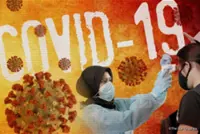Fake news: The Health Ministry has dismissed claims that fabric face mask use caused a surge in Covid-19 cases.
PETALING JAYA: Health experts have assured that using fabric face masks is just as good as the single-use surgical face masks to prevent Covid-19 infection.
Universiti Putra Malaysia medical epidemiologist Assoc Prof Dr Malina Osman said both types of face masks are equally effective, but added that practising proper hand hygiene is also important.
Already a subscriber? Log in
Save 30% OFF The Star Digital Access
Cancel anytime. Ad-free. Unlimited access with perks.





